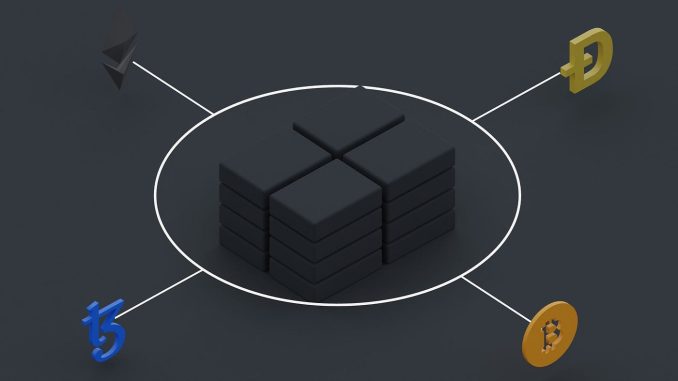
The arrival of Web3 marks a radical change from first and second phase centralised platforms such as artificial intelligence to a decentralised blockchain-based internet infrastructure. Web3 Mainstreaming solutions promised at the same time that its very nature is being challenged. The opportunities are definitely there, but destiny on how these will play out remains with society itself.
Understanding Web3 and Its Core Principles1. Web3 destroys the concept of the internet as a set system; instead, it’s an open permutation space where power is distributed among all live organisms and information comes from nowhere but other bitcoin are instead lightly edited. One of the main principles of Web3 is to decentralise everything:
a. Decentralization: Web3 creates peer-to-peer networks by using blockchain technology. Here the whole economy is directly between users, without intermediaries. This change enhances transparency and lowers the power of the center, so in theory at least it can give people more control over their own data on computer platformsrather than leaving them at mercy from big companies like Google
Tokens and Digital Assets: In Web3, a method of digitizing assets and rights has been introduced where they are represented as tokens – little pieces of computer code that live on blockchain networks. These tokens can represent ownership in a digital asset, cause one to participate as member in a Decentralized Autonomous Organization, or stand for rights to render certain services within the ecosystem.
Interoperability: To enable different blockchain networks to communicate with one another, interoperability protocols were developed. This makes it possible for value and data flow freely across the various decentralized application (dApp) platforms and their ecosystems in which they operate.2. Opportunities in the Web3 Ecosystem
With Web3’s decentralised nature, there are many opportunities in fields of business as follows:
Decentralized Finance (DeFi): What the Global Financial Crisis DeFi will allow people to: lend money, from off shore even; borrow at subprime rates and make other investments then arbitrage on their own 3x3s for extra gains–all without any intermediaries in between. Decentralized platforms of Web3 lending bring you transparency is not only convenient for user experience (who would want it otherwise?). It also means less chance of fraud whether one’s an experienced investor or not at all familiar yet with the world finance market Oriental cultures.
Digital Identity and Privacy: Web3 equips users with self-sovereign identity solutions, where an individual controls their digital identity and personal data on decentralized networks is known as Web3 digital identity. This makes for more privacy, security and interoperation among different platforms and services.
Content Monetization:Web3’s decentralized social media and platform enable creators to indirectly cash in their own content through token incentives, micropayments, and peer-to peer deals.This move creates a more personally profitable user-owned ecosystem, Nicepiece for creators while relieving people from their reliance of centralized advertising models.
Governance and DAOs:Web3 favours a decentralized governance philosophy for organizations such as DAOs, whereby decisions dont come so much from a single head but rather are made collectively by network members using clear logic and consensus approaches. The use of DAOs for governing protocols, dApps, and decentralized organizations encourages transparency as well as responsibility.
3. Challenges and Considerations
Despite its potential to transform the world, Web3 faces various challenges that must be addressed:
Scalability:As more users require the services and products offered by blockchain networks, the networks themselves have to scale up. Solutions such as layer-2 protocols, sharding and interoperability between blockchains are all being developed to meet this need.
Regulatory Uncertainty:Within Web3, and with cryptocurrencies in general, the regulatory regimes of different countries vary around the world. Regulatory clarity is necessary both to uphold rule of law and facilitate innovation as well as establishing investor protection and protecting participants’ legal rights without stifling growth development.
User Experience and Adoption:Necessary for the mainstream adoption of Web3 applications is making improvements on the user experience of non-technical users and simplifying their entry into its world. Better human-computer interfaces, educational materials, and enhanced blockchain network interoperability can all speed up acceptance usability.
4. Societal Impact and Future Directions
Looking ahead, Web3 has the potential for great societal impact and a great many future scenarios:
Empowerment and Inclusion:Web3 furnishes individuals with access to a global range of financial services and digital real estate operations. This empowerment promotes financial inclusion, economic resilience and socio-economic equity in regions that have been excluded from economic opportunity for generations.
A way of thinking that includes original ideas and communication: Web3 is not only an open platform for development but also a hub where know-how (mostly open source) and scalable wireless protocols converge. Then add the benefits of autonomous, decentralized governance models.
Benefits of open-source development, interoperable formats and self-governance models are there for all to see: the whole financial field is up for revision, as are public health systems, supply chains, even political structures.
Ecologic sustainability: The future of blockchain technology and cryptocurrency lays not only in Apps but also a healthy environment Australian Research Institute. For this reason, projects like energy-efficient workable consensus mechanisms and carbon off set programmes were developed to lighten the environmental impact caused by these technologies as well as encourage responsible behavior on behalf of innovators everywhere in any field.
Conclusion
To navigate Web3 effectively, you need a strategy that both embraces opportunities and tackles head on the obstacles of scalability, regulation and user adoption. Through this technology, which combines decentralisation with blockchain that branches into all aspects of life, Web3 will democratize access to digital assets (at most), guarantee both privacy and security for users and generally encourage the development of a more inclusive online environment.
As stakeholders collaborate to solve problems and unlock value in Web3, they can collectively shape a decentralized web for the digital age.
This is a place where innovation is encouraged, empowerment will find new expression and resilience the norm of existence.